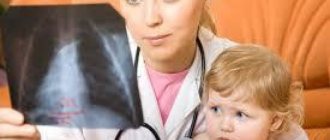Nature of the disease
Scabies is a contagious disease caused by a parasite, the scabies mite. Among its obvious characteristics are night itching, the formation of scabies on the skin (in the form of a straight or winding line measuring from 1 mm to several centimeters, white or dirty gray in color, at the front end of which you can see the female mite visible through the skin in the form blackhead), as well as a rash in the form of small nodules and blisters. The tick is not visible to the naked eye, since it reaches a size of only 0.25 x 0.35 mm. The scabies mite parasitizes humans and can be found on pillows, clothing, door handles, and bedding for a short time.
1 Parasite is an organism that uses other organisms as a source of food and/or habitat.
Scabies
Scabies almost always occurs through prolonged direct skin-to-skin contact. The predominant route of transmission is sexual. Children often become infected when they sleep in the same bed with sick parents. In crowded groups, other direct skin-to-skin contacts are also realized (contact sports, children fussing, frequent and strong handshakes, etc.). Although a number of manuals continue to reproduce outdated information about the transmission of scabies through household items (household items, bedding, etc.), experts agree that this route of infection is extremely unlikely. The exception is cases of Norwegian scabies, when up to several million mites live on the patient’s body (in typical cases this is 10-20 mites). The key experiment, which proved that direct contact with the patient’s skin plays a dominant role in the transmission of scabies, was performed in 1940 in Great Britain under the leadership of Mellanby. Of 272 attempts to infect volunteers by placing them in a bed from which patients with severe scabies had just risen, only 4 attempts led to illness.
Such features of the transmission of parasitosis are explained by the following data on its biology: • the scabies mite is inactive during the day; females come to the surface only in the late evening and at night; • the tick needs about 30 minutes to penetrate the host's skin; • in the external environment the tick dies quickly (at 21C and humidity 40-80% the parasite dies in 24-36 hours), the warmer and drier the faster; The tick loses activity even earlier.
Currently, more and more manuals and medical reviews include scabies, along with phthiriasis, in the list of sexually transmitted diseases, although for the transmission of these parasitoses it is not so much the coitus itself that is important, but rather the prolonged contact of bodies in bed.
You should know that mites that cause scabies in animals (dogs, cats, horses, etc.) can also reach humans, but do not find suitable conditions for their existence here and die rather quickly, causing only short-term itching and rash, which They go away without re-infection even without treatment.
The incubation period for scabies is 7-10 days.
Scabies is characterized by itching, especially worse at night, and paired nodular-vesicular rashes localized in certain favorite places. Externally, scabies burrows are thin, thread-like strips barely raised above the skin level, running straight or zigzag. Often the end of the burrow ends in a transparent bubble, through which a white dot can be seen - the body of the tick. Sometimes it is not possible to detect scabies burrows ( scabies without burrows ).
At the site of the bites, small nodules appear, the size of a millet grain and somewhat larger, which become covered with bloody crusts due to scratching. The primary rash is represented by small erythematous papules, which can be scattered or multiple, confluent. Over time, papules can transform into a vesicular (vesicles), rarely bullous (pemphigoid) rash. The severity of the rash does not correlate with the number of parasites, but is caused by an allergic reaction to their waste products.
Permanent skin damage is often complicated by various types of pustular infections and the development of the eczema process.
Favorite localization of scabies rash: hands, especially interdigital folds and lateral surfaces of fingers, flexor folds of forearms and shoulders, nipple area, especially in women, buttocks, skin of the penis in men, thighs, popliteal cavities, in small children - soles, as well as the face and even the scalp.
The presence of itching, primary rash and scabies is the main clinical symptom complex of a typical form of scabies .
In domestic dermatology, it is customary to identify characteristic eponymous symptoms that facilitate diagnosis: • Ardi's symptom - pustules and purulent crusts on the elbows and in their circumference; • Gorchakov's symptom - bloody crusts there; • Michaelis symptom - bloody crusts and impetiginous rashes in the intergluteal fold with transition to the sacrum; • Sezari's symptom - detection of scabies in the form of a slight elevation upon palpation. Scratching often leads to severe bacterial infection of the primary elements with the development of pyoderma, which in rare cases can lead to post-streptococcal glomerulonephritis and possibly rheumatic heart disease.[29][30][31][32]. Sometimes pyoderma with scabies is accompanied by the appearance of boils, ecthyma and abscesses, accompanied by lymphadenitis and lymphangitis. A number of patients develop microbial eczema or allergic dermatitis, which, along with pyoderma, in domestic dermatology are classified as complicated forms of scabies . Complications of scabies in the form of dermatitis and pyoderma occur in approximately 50% of patients.
In children, especially infants, along with papulovesicles and scabies, there is a vesiculourtic rash , weeping develops, paronychia and onychia occur. In children in the first 6 months. In life, the clinical picture of scabies often resembles urticaria and is characterized by a large number of blisters that are scratched and covered in the center with a bloody crust, localized on the skin of the face, back, and buttocks. Later, a small vesicular rash prevails, sometimes blisters (pemphigoid form). In some cases, scabies in children resembles acute eczema and is accompanied by intense itching not only in the areas where mites are located, but also in distant areas of the skin. In this regard, sleep disturbances are often observed, complications in the form of allergic dermatitis and pyoderma such as impetigo are more often observed. Lymphadenitis and lymphangitis may occur, leukocytosis and lymphocytosis, eosinophilia, accelerated ESR, and albuminuria are observed. Infants may develop sepsis. In recent years, there has been an increase in cases of atypical scabies with erased forms in children.
In approximately 7% of patients, nodular (nodular) scabies , in which bluish-purple or brownish rounded skin compactions 2-20 mm in diameter are formed, which can persist for several weeks even in the absence of parasites. In fact, these seals are a special version of scabies in the form of a lenticular papule. The reason for the occurrence of such elements is the special predisposition of the skin to respond to the influence of the irritant with reactive hyperplasia of lymphoid tissue in the places of its greatest accumulation. It predominates on the scrotum, penis, buttocks, elbows, in the anterior axillary region, sometimes nodules form in the perianal region. Nadular scabies is also called scabious lymphoplasia . Since there are no living mites in the nodules, their formation is explained by a pronounced immune-allergic reaction of the host body to the products of their vital activity. In cases of reinvasion, a relapse of scabious lymphoplasia is observed in old places without the presence of a course. The nodules are accompanied by severe itching and in some cases corticosteroid injections are used to treat them.
Atypical forms of scabies also include Norwegian scabies, “clean” scabies (“incognito” scabies) and pseudosarcoptosis.
Norwegian (crusted, crustose) scabies was first described by Norwegian doctors Boeck and Danielssen (C. W. Boeck, D. C. Danielssen) in 1848. Norwegian scabies develops more often in individuals with predisposing disorders of the immune system or skin sensitivity (see Pathogenesis) , however, in approximately 40% of cases it is observed in people not belonging to risk groups, which suggests a possible genetic predisposition in such patients. Eosinophilia is observed in 58% of patients with Norwegian scabies; an increase in IgE levels (on average 17 times) is detected in 96% of cases. Clinically, Norwegian scabies appears as a psoriasiform dermatitis with an acral distribution and the presence of variable whitish scales. Usually, the subungual zones are also involved with the development of severe hyperkeratosis, leading to thickening and degeneration of the nail plate. In some cases, Norwegian scabies primarily affects the areas of the scalp, face, neck and buttocks. About half of patients with Norwegian scabies do not feel itching at all. Due to the fact that with Norwegian scabies, more than a million living parasites can exist on the patient’s body (in typical forms, the average number of mites is 15 individuals), this form of the disease is extremely contagious.
Scabies of “clean people” or scabies of “incognito” is detected in people who frequently wash themselves at home or due to the nature of their production activities. In this case, most of the scabies mite population is mechanically removed from the patient’s body. The clinical picture of the disease corresponds to typical scabies with minimal manifestations. Complications often mask the true clinical picture of scabies. The most common are pyoderma and dermatitis, microbial eczema and urticaria are less common.
Pseudosarcoptosis is a disease that occurs in humans when they are infected with scabies mites (S. scabiei other than var. homonis) from other mammals (usually dogs). The disease is characterized by a short incubation period, the absence of scabies (mites do not reproduce on an unusual host), urticarial papules on open areas of the skin. The disease is not transmitted from person to person.
Routes of infection
Some parents believe that scabies can be contracted from pets (dogs, hamsters), but this is not true.
The source of infection is a sick person and his things (bed linen, towels, washcloths, etc.). Most often, infection occurs through contact with a sick person (if you have to sleep in the same bed or care for him). This is a direct route of transmission of the disease. But you can become infected without communicating with a sick person - through household items and bedding. In this case, we can talk about an indirect route of infection.
Whole pockets of scabies may also appear - for example, if in a family the first sick person infects other relatives, both adults and children. Moreover, the younger the child, the higher his likelihood of infection. An outbreak of the disease can occur in any community - in a preschool, at a school, in a hospital. Extrafocal cases of scabies infection (in baths, trains, hotels) are a very rare occurrence. However, this possibility cannot be excluded: the scabies mite can be transmitted through successive contact of a stream of people with bedding and toilet items, on which it can survive for some time.
How does scabies become infected?
The disease is transmitted only through close contact with a sick person. What is needed is tactile communication. For example: handshakes, hugs, touches. Through household items the likelihood of infection is lower.
What accompanies the spread of parasites:
- unfavorable sanitary and housing conditions;
- failure to comply with hygiene rules;
- cool weather conditions.
When the temperature outside the window decreases, the risk of infection increases, since the human body decreases the production of sweat. The solution secreted by the sweat glands has antimicrobial properties, which prevents the proliferation of parasites.
Manifestations of the disease
Once on human skin, scabies mites immediately gnaw through it and begin to feed intensively. The females lay eggs at the same time. The female's life expectancy is 1.5 months, and during this time she manages to lay about 40-50 eggs. After a few days, larvae emerge from them, come to the surface of the skin and turn into adult ticks - males and females. A new cycle of dispersal to other areas of the skin begins.
The disease appears on average 2 weeks after infection. The first and one of its most important symptoms is itchy skin all over the body, especially in those places where the tick moves. At night, the itching intensifies, since this is the time when the female scabies mite is most active. Children involuntarily scratch their skin in their sleep, and the places where they scratch can get infected and purulent crusts appear. Babies sleep poorly at night, get up in the morning lethargic and capricious, but by this time of day the itching decreases. Sometimes the need to itch is not so strong, children do not complain, and parents do not notice for a long time that their children are sick. If parasites exist on the human body for a long time, old scabies burrows appear on the skin in the form of dry surface cracks. True, in the case when the disease is no more than two weeks old, scabies may not be visible. However, scabies also has other external signs. At the sites of tick bites, small (up to 1 mm) rashes appear, similar to nodules, and also in the form of pink or skin-colored bubbles. Scratching causes them to become covered with reddish crusts.
“Typical” places for scabies rashes are areas with thin, delicate skin: interdigital folds and wrist folds on the hands, as well as the stomach, back, buttocks, inner thighs; The rash often covers the penis and scrotum. In babies, rashes can appear on the face, chest, and near the armpits.
If such symptoms appear, the child should be shown to a doctor, especially a pediatric dermatologist.
Types of scabies
Typical scabies and its symptoms
- Itching
- Rashes are scattered or multiple, small reddish nodules merging into one line. After a while, they turn into bubbles that burst to form a crust. Crusts with purulent contents mean that when scratching a person acquired a bacterial infection.
- Winding scabies passages, which consist of segments 5-8 mm long (this is the distance that the female mite “travels” per day). They peel off over time and look like gray scratches ending in a transparent bubble in which you can see a dark dot - this is the body of the tick. Typical location of this form of scabies:
- fingers, more precisely, the lateral surfaces of the fingers and the distance between them,
- bends of the hands and elbows,
- mammary glands (especially nipple halos),
- lower abdomen, male genital organs, etc.
Complicated scabies (with pustules) and its symptoms
Specific additional symptoms: dermatitis or purulent skin lesions.
Scabies of clean people and its symptoms
With increased attention to hygiene and a healthy immune system, rashes are very rare, and itching intensifies only in the evening and at night.
Nodular scabies and its symptoms
A few round skin lumps with a diameter of 2-20 mm, which are very itchy. They are colored red or brown, and scabies are visible on their surface. As a rule, they affect the penis, scrotum and inguinal-scrotal folds, circumference of the anus, nipple halos, inner thighs and buttocks.
Norwegian scabies and its symptoms
A very rare form, it appears only in those patients who, for various reasons, do not itch (do not feel itching or there is no allergic reaction due to weakened immunity). The skin thickens and becomes rough, rashes affect almost the entire surface of the patient’s body, even the skin of the face, hair and nail plates. The most unpleasant and characteristic symptom of Norwegian scabies is the formation of thick (up to 3 cm thick) crusts of a dirty yellow color over the entire surface of the body, under which extensive weeping erosions are exposed.
Diagnostic capabilities
Often, doctors of all specialties, when faced with the symptoms of scabies, make diagnostic errors.
Especially if the sick child already suffers from allergic skin diseases, which are accompanied by itching. In such situations, doctors sometimes do not conduct laboratory tests and make a diagnosis of “allergy”, “allergic dermatitis2”, with an appropriate course of treatment: they prescribe antiallergic drugs, prohibit washing, and recommend lubricating the skin with hormonal ointments. But these measures only worsen the course of the disease. Scabies is identified by a combination of a number of signs. Firstly, based on characteristic symptoms (such as itching, scabies, rash in the form of small nodules and blisters with appropriate localization), secondly, in the absence of effect from treatment with antiallergic and anti-inflammatory drugs, including hormonal ointments, and finally, if there are people with scabies in the child’s environment. Based on all of the above, scabies is diagnosed and appropriate treatment is prescribed.
2Dermatitis is inflammation of the skin.
Laboratory research is carried out as follows: the mite is removed from the scabies tract with a disposable sterile injection needle or scraped off with a sterile blade. The scraping is placed on glass, where a drop of alkali or lactic acid has previously been applied, and viewed under a microscope. You can see a whole tick, its individual fragments or eggs.
Treatment of scabies in children
Treatment procedures are usually carried out at home. Naturally, all of them are aimed at destroying the pathogen. The most effective modern therapeutic agents are BENZYL BENZOATE, SPREGAL and PERMETHRIN (MEDIFOX). Each of these medications has its own characteristics.
Benzyl benzoate suspension (10% for children, 20% for adults)
Release form . Sold ready to use, it looks like milk, is easily and evenly applied to the skin, has no odor, and dries quickly.
Application . Benzyl benzoate in an amount of 100 g is applied once on the 1st and 4th days of treatment. Before each rubbing, the patient must be bathed. The second and third days are free from treatment.
Additional measures . During the treatment process, the patient needs to change his underwear and bed linen twice: after the first treatment (on the first day) and two days after the second rubbing, that is, on the sixth day of treatment. After this, the patient should wash again.
Spregal
Release form : aerosol. Application. Treatment is usually carried out once. One bottle is enough to treat a family of 3 people. The can should be kept at a distance of 20-30 cm from the patient’s skin. It should be borne in mind that small children may be frightened by jets directed at them.
Permethrin (Medifox)
Release form . Sold in a bottle (24 ml), on which divisions are applied. Before each use of this drug, you need to prepare an emulsion; Mix a third of the bottle (determined by divisions) with 100 ml of boiled water at room temperature. Apply to skin once a day for 3 days in a row. On the fourth day, the patient should take a shower and change his underwear and bed linen. The drug is contraindicated in children under 2 months.
Application . Used in the same way as other anti-scabies.
The effect of treatment (provided that the drugs are used correctly) usually occurs within a very short period of time - up to 1 week. By this time, 91% of patients fully recover. The itching disappears already on the 2nd day. However, in some cases, this symptom may persist for 2 weeks without being associated with a specific time of day. If there are no fresh scabies rashes, such itching is called post-scabies. Its appearance is the result of an allergic reaction of the body to the mite and its waste products. Such patients are not contagious to others, and they do not need repeated treatment against scabies. To relieve discomfort, such patients are recommended to take one of the antiallergic drugs, sometimes in combination with hormonal ointments (for example, ADVANTAN) or skin moisturizers (for example, TOPICREM).
Symptoms of scabies
There is no incubation period before the first symptoms of scabies appear when infected by adult females. Itchy skin may appear as early as 1-2 weeks after the initial infection if mite larvae get on the skin.
You can diagnose the disease yourself by comparing what scabies looks like on the skin with a description or photo. The favorite location of the tick on the body is as follows;
- interdigital spaces;
- wrists;
- shins;
- armpits;
- buttocks;
- lower back and waist;
- genital skin;
- head, skin behind the ears.
The moves made by the female look like thin whitish stripes. They rise slightly above the surface of the skin. The length of each passage is no more than 1 cm. Sometimes they have lateral branches, which are made by male ticks. At the blind end of the passages hides a female, which looks like a black dot on the surface of the skin.
In the initial stage, the rash is not pronounced. Later, when an allergic reaction to the mite, its excrement and eggs develops, red spots resembling hives appear on the skin. They may be irregular in shape and merge into larger spots. If scabies is not treated, small blisters with liquid contents appear at the site of the rash. Over time, they are able to increase in size. In severe forms of scabies, the rash can cover the entire body, but rarely spreads to the scalp, although dermatologists detect hair damage in 30% of patients.
In conditions of insufficient immunity or with certain individual characteristics of the skin, the Norwegian form of scabies develops. It looks like dermatitis, reminiscent of psoriasis, forming scales on the surface of the inflamed skin. The pathological process can quickly involve different parts of the body, subungual zones; frequent localizations are the head, neck and buttocks. A person with this form of scabies is very contagious; several million mites can be on his body at the same time, whereas under normal conditions there can be up to 15 pathogens.
Memo for parents
- It is better to take medications for scabies in the evening, before bed. This is due to the daily rhythm of the pathogen. With this disease, the scalp and face may be affected in children, so the drug should be applied to the entire skin. After treating the skin, the smallest children need to wear a vest with sewn-up sleeves or mittens (mittens) so that they do not put their hands with the medicine in their mouth or rub their eyes. If the anti-itch agent does get on the mucous membranes, it is necessary to rinse the eyes, mouth, and nasal passages with running water.
- The patient should be washed and bed linen changed before starting treatment and after it ends. The child is washed in the shower with soap, wiped dry with a towel, after which the medicine is applied (and if necessary, lightly rubbed) onto the skin of the entire body, starting from the top - head, face, torso, limbs. All procedures must be performed using disposable gloves, which are then discarded.
- Apply the drug only with your hand (not with a tampon or napkin). The medicine must be applied to the skin for at least 12 hours.
- Treatment of patients identified in the same outbreak, as well as members of their families (even if the latter do not have visible manifestations of the disease), is carried out simultaneously to avoid re-infection. A sick child should have a separate bed and towel. In the room where it is located, wet cleaning of the floor is required. Bed and underwear are boiled and ironed with a hot iron.
Disinfection (disinfection) for scabies
Household items to be boiled must be boiled within 5 minutes from the moment of boiling. Outerwear (dresses, suits, trousers, sweaters, etc.) should be ironed with a hot iron on both sides, not excluding pockets. Things that are inaccessible to such treatment - soft toys, outerwear - coats, fur coats, leather and suede products - can be placed in a closed plastic bag for three days. And daily wet cleaning in the patient’s room must be done with a 1-2% soap-soda solution, wiping it not only the floor, but also the furnishings.
If we are talking about a focus of the disease (in a family or in a team), then at the end of treatment, the doctor must notify the sanitary-epidemiological service about the case of scabies so that its specialists can carry out the final disinfection of the room. SES representatives treat items (including mattresses, pillows, blankets, etc.), furniture and floors with a special disinfectant liquid, but it can ruin them. Therefore, the best option is to carry out this event yourself, using A-PAR aerosol (200 ml), containing allethrin isomers as an active ingredient in a concentration of 0.32%.
A-PAR is intended for disinfection of clothing and bedding of patients with scabies, but if necessary, it can also be used to treat the rooms in which such patients were examined. You just need to spray the contents of the bottle over the entire surface of items that are not subject to boiling (these are outerwear, mattresses, pillows, blankets) or onto the surface of the floor and other objects that the patient has come into contact with (door handles, chairs, upholstered furniture, etc.) . Bedding and clothing are subject to double-sided processing.
The product does not leave stains on fabrics; after using it, items do not need to be washed. Textiles disinfected with A-PAR can be used several hours after treatment. And to avoid irritation of the respiratory tract, you should open the windows in the room where the spraying is performed.
Clinical manifestations
The incubation period lasts from 7 to 12 days. In individual cases these numbers may vary. The first signs of scabies in a child appear several hours after infection; he begins to scratch his skin.
The main symptom is itching. It comes in varying degrees of intensity: from mild to intense and painful. Tends to get worse at night. This is due to the biological activity of the tick.
Children itch a lot and their skin gets damaged. This creates an entrance gate for secondary infection.
Important! The initial stage of scabies in children is sometimes veiled. Scratching your body can mimic an allergic reaction. Therefore, parents often give their child antihistamines on their own. Remember, if irritation does not go away, this is a serious reason to seek qualified medical help!
In addition to the favorite localization of rashes - folds between the fingers, in children under 5 years of age they can spread throughout the body:
- palms and soles;
- head (under the hair);
- neck and face.
Specific elements of the rash:
- points - the place of tick penetration;
- scabies - red, sometimes grayish stripes of different lengths;
- exit site for the parasite.
There is scabies in children, the symptoms of which are not pronounced. It is also called “the scabies of clean or tidy people.” When you shower several times a day, dead skin cells are washed away. The surface layer of skin becomes thinner. A tick can parasitize in such a layer, but the symptoms of the disease will be minor. It is almost impossible to detect scabies.
The tick is not susceptible to soap and water, so careful child hygiene does not prevent the disease and does not reduce the likelihood of infection.









